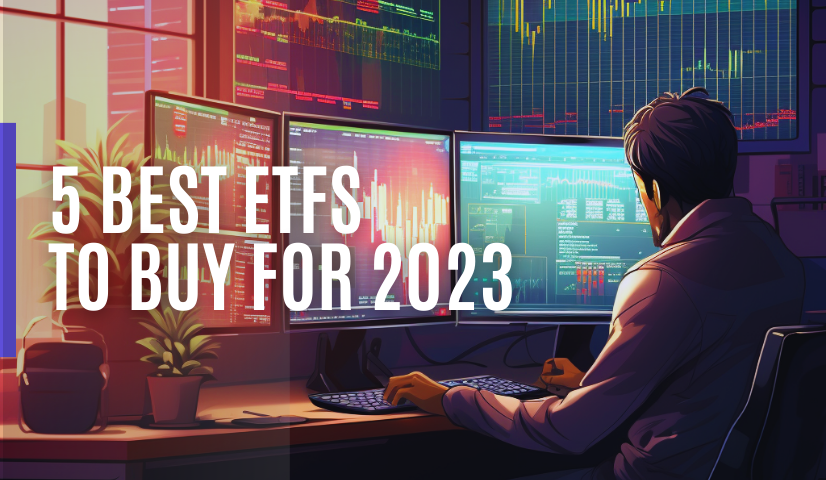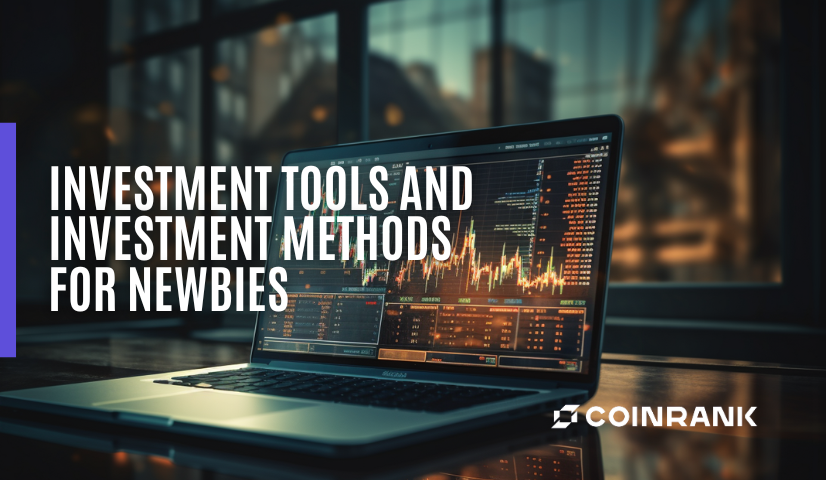
KEYTAKEAWAYS
The U.S. inflation is lower than expected, and the last interest rate hike is expected at the end of the month. The market seems to be bottoming out, ready to start the next bull market, and buying a basket of index ETFs is a good choice.

CONTENT
INTRODUCTION TO THE DIFFERENT TYPES OF ETFS IN THE US
Exchange-Traded Funds (ETFs) have revolutionized the way investors approach the US stock market. Let’s delve into the various types of ETFs available in the US market.
Common types of ETFs
- ETFs Tracking the S&P 500 Index
SPDR S&P 500 ETF (SPY), iShares Core S&P 500 ETF (IVV), and Vanguard S&P 500 ETF (VOO) are leading the pack when it comes to tracking the renowned S&P 500 Index.
The S&P 500 Index comprises 500 US companies, offering broad market exposure.
While these ETFs follow similar investment strategies, they differ in expense ratio, with SPY at 0.09%, VOO at 0.03%, and IVV at 0.03% as of writing.
- ETFs Tracking the Entire US Market or Specific Industries
Vanguard Total Stock Market ETF (VTI) provides coverage of the US market, including large and mid-cap stocks.
The Invesco QQQ ETF (QQQ) tracks the Nasdaq 100 Index, which includes popular technology stocks.
QQQ’s top holdings include Apple, Amazon, Microsoft, and other leading tech companies.
- Bond ETFs
iShares Core US Aggregate Bond ETF (AGG) and Vanguard Total Bond Market ETF (BND) are popular choices for bond ETFs.
AGG and BND provide broad exposure to the investment-grade United States bond market, offering balanced exposure to the bond market.
- International ETFs
Vanguard FTSE Developed Markets ETF (VEA) and iShares Core MSCI EAFE ETF (IEFA) provide exposure to developed markets outside the US.
The portfolio of IEFA includes stocks from Europe, Australasia, and the Far East. On the other hand, VEA focused on stocks in the major markets of Europe and the Pacific Region. It invests in leading companies across the globe like Nestle, Samsung Electronics, and ASML.
TOP 5 US ETFS
These ETFs offer investors exposure to different segments of the stock market, including the total US market, S&P 500 companies, international stocks, and large-cap US stocks. They provide a convenient and cost-effective way to diversify portfolios and participate in the performance of specific market segments.

#1. Vanguard Total Stock Market ETF (VTI)
- VTI is a passively managed ETF that aims to approximate the holdings of the CRSP US Total Market Index.
- The index measures the investment return of the overall US stock market.
#2. Vanguard S&P 500 ETF (VOO), SPDR S&P 500 ETF Trust (SPY), and iShares Core S&P 500 ETF (IVV)
- VOO, SPY, and IVV are ETFs that seek to replicate the performance of the Standard & Poor’s 500 index.
- The index represents the performance of large-cap US stocks.
- Fun Fact: SPY was the first ETF listed in the US, established in January 1993.
#3. Vanguard Total International Stock ETF (VXUS)
- VXUS aims to achieve returns similar to those of the FTSE Global All Cap ex US Index, which measures the investment return of stocks issued by companies located outside the United States.
- The ETF invests in global stock markets outside the US, including both developed and emerging markets.
HOW TO BUY US ETFS
Investing in US Exchange-Traded Funds (ETFs) is a straightforward process. Here are the steps to purchase US ETFs:
- Choose a Brokerage Account:
Select a reputable brokerage firm that offers access to US markets and allows investors to invest in ETFs. Consider factors such as commission fees, trading platform features, and customer support.
- Open an Account:
Follow the account opening process with the chosen brokerage. This typically involves providing personal information, completing forms, and agreeing to the terms and conditions.
- Open an Account:
Follow the account opening process with the chosen brokerage. This typically involves providing personal information, completing forms, and agreeing to the terms and conditions.
- Fund the Account:
Transfer funds to the brokerage account. Investors can do this by linking a bank account to the brokerage account or by depositing money directly into the brokerage account.
ADVANTAGES OF ETFS
- Diversification:
ETFs provide investors with instant diversification by pooling together a basket of securities, such as stocks or bonds. This diversification helps mitigate risks by reducing exposure to individual companies or sectors.
- Liquidity:
ETFs are traded on stock exchanges as opposed to mutual funds, allowing investors to buy or sell shares throughout the trading day at market prices. This liquidity provides flexibility and ease of trading for investors.
- Transparency:
ETFs typically disclose their holdings on a daily basis, allowing investors to know exactly what assets the fund holds. This transparency enables informed investment decisions.
- Lower Costs:
ETFs generally have lower expense ratios compared to actively managed mutual funds. The passive investment approach of many ETFs helps keep costs down, resulting in potentially higher net returns for investors.
DISADVANTAGES OF ETFS
- Tracking Error:
ETFs aim to replicate the performance of an underlying index. However, there can be slight deviations in returns due to factors like tracking errors. It’s important for investors to assess the ETF’s tracking ability and evaluate its historical performance.
- Limited Control:
When investing in an ETF, investors have limited control over the specific securities within the fund. The investment decisions are made by the fund manager, which may not align with an individual investor’s preferences or objectives.
- Trading Costs & Risks:
Although ETFs generally have lower expense ratios, investors may incur trading costs such as brokerage commissions when buying or selling ETF shares. Frequent trading or investing in niche or illiquid ETFs can increase trading costs.
- Understanding the Risks:
While ETFs generally provide excellent diversification, they are still subject to various risks, including market risk, sector risk, and liquidity risk. The value of an ETF can fluctuate based on the performance of the underlying securities. Investors should be prepared for potential market downturns and price volatility. It’s essential for investors to carefully review the fund’s prospectus, consider their risk tolerance, and evaluate the fund’s underlying assets.
CONCLUSION
Investors can choose from these ETFs based on their investment objectives, whether they seek broad market exposure, specific sector focus, bond market exposure, or international diversification. Each ETF has its own unique features and advantages, making them suitable for different investment strategies.
Looking for the latest scoop and cool insights from CoinRank? Hit up our Twitter and stay in the loop with all our fresh stories!

















